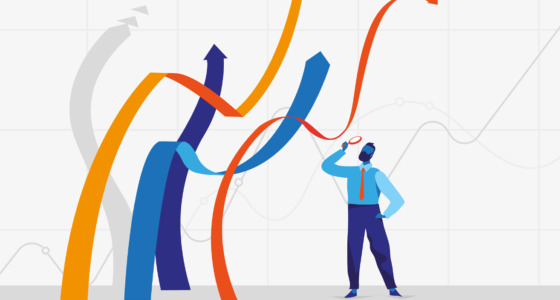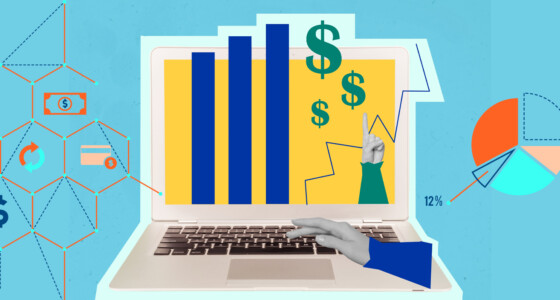

Day trading is a very popular approach. Many newbies want to trade within a day. They believe that closing positions until the end of a business day may prevent them from market volatility caused by unexpected events that may occur until the market opens. This is sometimes the case.
However, day trading has some pitfalls, as it’s a risky approach that requires skills and experience. Moreover, there are some restrictions a day trader may face. Fortunately, there are no restrictions on age. According to statistics, 60% of day traders are over 40 years old. Keep reading to learn the definition of day trading and to see which of its requirements may actually limit you.
Definition
It may sound strange, but the day trading approach has some meanings. In general, day trading is a strategy that implies opening and closing numerous trades within one business day. Day traders aim to open multiple positions to cover the spread and gain considerable income trading on highly volatile markets.
However, there is one more meaning. In many sources, day trading is considered only stock trading on US markets. This approach has certain requirements.
Keep in mind that day trading isn’t only about stocks. This method can be applied to any asset, including currencies, cryptocurrencies, commodities, and futures.
Now, let’s take a look at some of the day trading restrictions.
1. Time
Day trading is an approach in which you open and close a position on the same asset within one day. Therefore, you aren’t considered a day trader if you hold a trade over a longer period. It’s vital to understand that one day doesn’t mean 24 hours. Every market has its own working hours. Before starting to trade, check the business hours for the assets you trade.

2. Number of trades
There are no limitations for forex, commodity, futures, futures options, and cryptocurrency day trading. You can open as many trades as your balance allows. However, if you are a stock day trader on the US market, there are some requirements you must fulfill.
When you trade on a cash account, there are no limitations on the number of trades. But there are large fund requirements. Therefore, few traders can afford to trade on a cash account.
When you use a margin account, you have certain limitations. If, within five business days, you open more than three trades on stocks or options and their number is over 6% of your total trading activity, you will be classified as a pattern day trader. It’s a very strict requirement because the day trading strategy implies opening numerous trades within a day. That is, even if you open only one trade a day, there is a risk you will be considered a pattern day trader. This classification leads to more restrictions that will be mentioned in the following points.
The US restrictions may apply even if you trade with a broker outside the US, but the securities you trade are settled in the US. Check the requirements with your broker.

3. Minimum account balance
If you are a stock day trader and have to fulfill US requirements, your margin account balance should be at least $25,000. The amount can be reached with both cash and securities. However, the amount should be deposited into a single account. It means you can’t combine the balances of several accounts or refer to a bank account. Also, the sum should be on the account before the next trading day. Otherwise, you won’t be allowed to trade.
If the balance falls below the limit, a trader receives a margin call and can’t maintain their trades until the limit is met. The balance should be funded within five business days. If a trader fails to deposit funds, they will be allowed to trade on a cash basis only within 90 days or until the minimum balance requirement is fulfilled.
4. The amount you borrow
When trading on the US stock market, you can use up to 4:1 leverage. It’s not a huge amount compared to other markets. Still, considering a requirement of $25,000 a trader must have on their account, the final sum with the leverage is enough for stock trading. Moreover, only a 2:1 leverage is available for overnight traders. That is, day traders have better conditions.
What is day trading?
Day trading is the action of buying and selling security batches within a day, sometimes within a matter of seconds. The trader will profit based on price volatility and the short-term change in prices.
For example, if a trader buys something for $500 and sells it for $501, then they would have earned $1 with the trades. The earnings may seem small, but if more trades are made, the potential for earning increases.
Understanding the rule of day trading
For you to be considered a day trader – one that follows a pattern – you must follow a set of rules. The most important rules are in the number of trades that you make, and at which moment.
According to the Financial Industry Regulatory Authority (FINRA), you are considered a day trader if you perform at least four day trades within 5 business days. The number of trades should also represent at least 6% of your margin account total trades within the same period.
Also, you cannot go into day trading without understanding the lingo (leverage, margin, etc.). It’s an unspoken rule – but nonetheless, it’s a rule. Also, you need to keep $25,000 in your brokerage account if you buy and sell more than 4 times per business week. This is referred to as the “pattern day trading rule,” and reflects the fact that you need significant capital to start trading.
Examples
During day trading, you have to buy a security and then sell it on the same day so that you cover the security. Because of this restriction, you can go for nothing less, and nothing more. You won’t be making any profit, which is why you are not technically considered a day trader.
For example, let’s say that you have $5,000 in your account. Because of the restrictions, you are limited to three-day trades within a five-day rolling period. If your account funds reach $25,000, then these limitations will no longer apply to you, and you can call yourself a pattern day trader.
Final thoughts
There are no strict rules for day trading except for the US stock market. Still, if you trade other assets, including cryptocurrencies, currencies, commodities, futures, ETFs, etc., you will have to deal with a minimum account balance requirement. They differ regarding a broker. So, don’t forget to check the trading rules before you open your first day trade.









